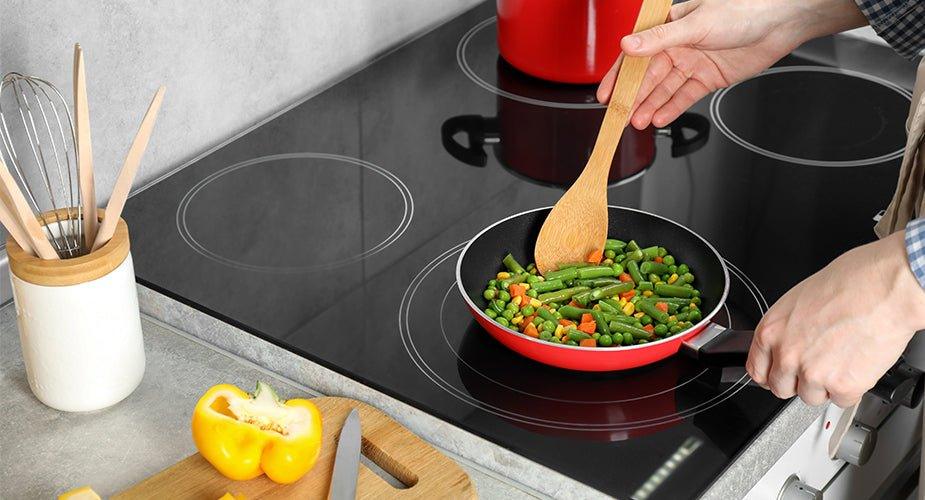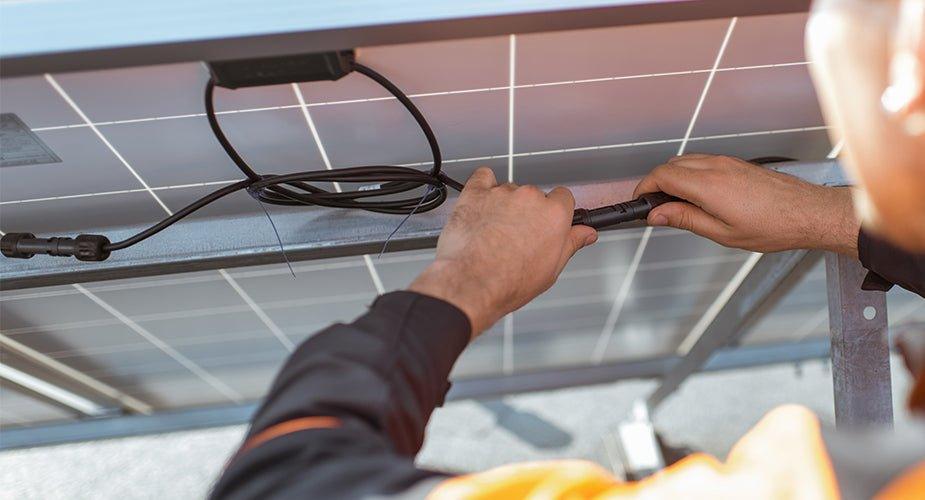Table of Content [ Show ]
Gas and electric stoves have been around for quite some time. But with the surge in gas prices due to the widespread use of fossil fuels impacting the environment, more and more people recognize electric stoves as a better and more secure substitute for gas cookers.
Given that electricity is the primary energy source for the majority of households, gaining insights into the power consumption of electric stoves becomes increasingly important due to their widespread use in modern kitchens. In this article, we'll explore how many watts does an electric stove use and the factors affecting it.
Understanding How Many Watts Does an Electric Stove Use
Before delving into the specifics of electric stove wattage, let's have a quick look at what an electric stove is and why it's a popular choice among homeowners.
Electric stoves use electricity to generate heat for cooking. They are mostly composed of one or more heating elements, often coil burners or smooth, glass top or ceramic surfaces, and an oven for roasting or baking.
Electric stoves have revolutionized the way we cook with their ease of use and precise temperature control, while at the same time becoming a more environmentally responsible choice.
The power consumption of an electric stove is measured in watts (W) and each heating element on the stove has a specific wattage rating. This will then give you an idea of how many watts does a stove use.
Factors Affecting Stove Wattage:
In the U.S., electric stoves typically have a total wattage ranging from 3,000 to 12,000 watts, depending on the stove’s size and features. Here are the factors that affect how many watts does stove use.
Burner size and number – the size and number of burners will directly impact the overall wattage of your stove. Larger stoves with multiple burners generally have higher wattage capacities to support simultaneous cooking on multiple surfaces.
Energy efficiency feature – modern electric stoves are equipped with energy-efficient features, enhancing their overall performance. One example is the induction stove, which uses lower wattage than the traditional electric stoves. Additionally, many modern stoves offer adjustable power settings, enabling users to reduce heat intensity when high temperatures are unnecessary, contributing to energy savings.
Cooking method – the method you choose for cooking, whether it’s boiling, simmering, baking, or any other technique, affects the energy requirements of your stove. Each cooking method has its corresponding energy needs, influencing how much power your stove needs to meet the task.
Temperature setting, cooking method, and duration – if you are using your stove in a high-temperature setting, expect that you are also using more power as compared to when you are using the stove in a lower setting. This is also directly linked to the cooking method that you are using. For example, if you are boiling water, then you are most likely in a max setting as compared with just simmering. Also cooking for extended periods will result in higher power consumption compared to shorter cooking sessions.
Cookware selection – using appropriately sized and flat-bottomed pots and pans will ensure optimal energy transfer and even heating. Using the wrong cookware means that the efficiency of your stove is reduced, resulting in more power consumption.
Here are the common wattage ranges for different types of electric stoves:
1. Small apartment stoves – compact stoves are typically used in small apartments or studios. Stoves used in these living spaces are suited to handle basic cooking tasks, and the typical average wattage is around 3,000 to 4,000 watts.
2. Standard home stoves – these type of stoves offers a wider range of features compared to compact ones. They can have multiple burners and can handle various cooking needs. The wattage range for these falls between 6,000 to 8,000 watts.
3. High-end and commercial stoves – these are how many watts does a stove use designed for the cooking enthusiast or for commercial kitchens that require advanced features or high cooking capacities. Wattage for this can reach up to 12,000 watts or more.
It is also important to note that the wattage mentioned represents the total power consumption of the entire electric stove. Individual burners on a stove may have different wattage rates. To know the specific wattage of your electric stove, simply refer to the user manual or manufacturer’s label. If you can’t find the manual, you can also use a wattage meter that you can purchase online and just plug in your stove to know the wattage rate.
The big question is, how many watts does a stove use?
To determine the cost, you have to consider different factors like the local energy rates, the wattage of the burner, and the duration of use.
On average, using a 1500-watt electric stove burner for 2 hours a day, considering an electricity rate of 10 cents per kilowatt-hour (kWh), would cost approximately 15 cents per hour, 30 cents every day, or around $9 per month. (This is for one burner only. If you use multiple burners per cooking session, you’ll need to compute accordingly)
Electric Stoves and Green Energy
As mentioned, electric stoves are now seen as a much more sustainable choice. This is especially true if you power your electric stoves with clean energy sources like wind and solar power. Aside from being a good money move with the gas prices soaring, you are now guaranteed to leave a lower carbon footprint as you stir away from fossil fuel reliance.
In addition, in the event of power outages caused by severe weather or unexpected circumstances, having an alternative source is important and this is where house generators come into play.
House generators are basically backup power systems that can supply electricity to your home when the main grid is down. They come in various sizes and types, with portable generators being the most common option.
If you are looking for product recommendations, check out the range of products from Nature’s Generator. This trusted company can offer generators that could power up your whole house or just specific appliances such as electric stoves. To assist you in determining the perfect backup generator setup for your requirements, feel free to contact Nature's Generator here.
Final Thoughts:
As homeowners shift from gas to electric stoves amid rising gas prices and environmental concerns, understanding how many watts does an electric stove use and the factors influencing energy consumption becomes essential. Opting for electric stoves also provides flexibility in using alternative power sources like portable generators, empowering homeowners to make informed decisions and optimize energy usage effectively.
* We want to give credit where credit is due. Professional writer, Michelle Gamana, contributed research and content to this blog titled: How Many Watts Does an Electric Stove Use Thank you, Michelle, for your contributions!






 10,000W LIFEPO4
10,000W LIFEPO4









